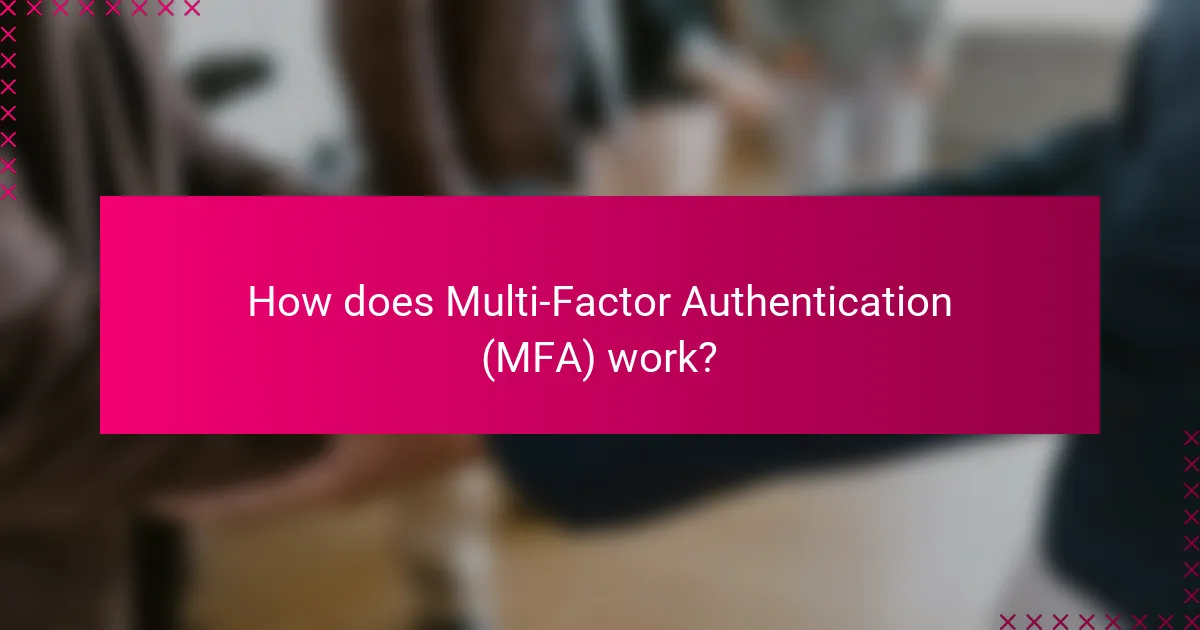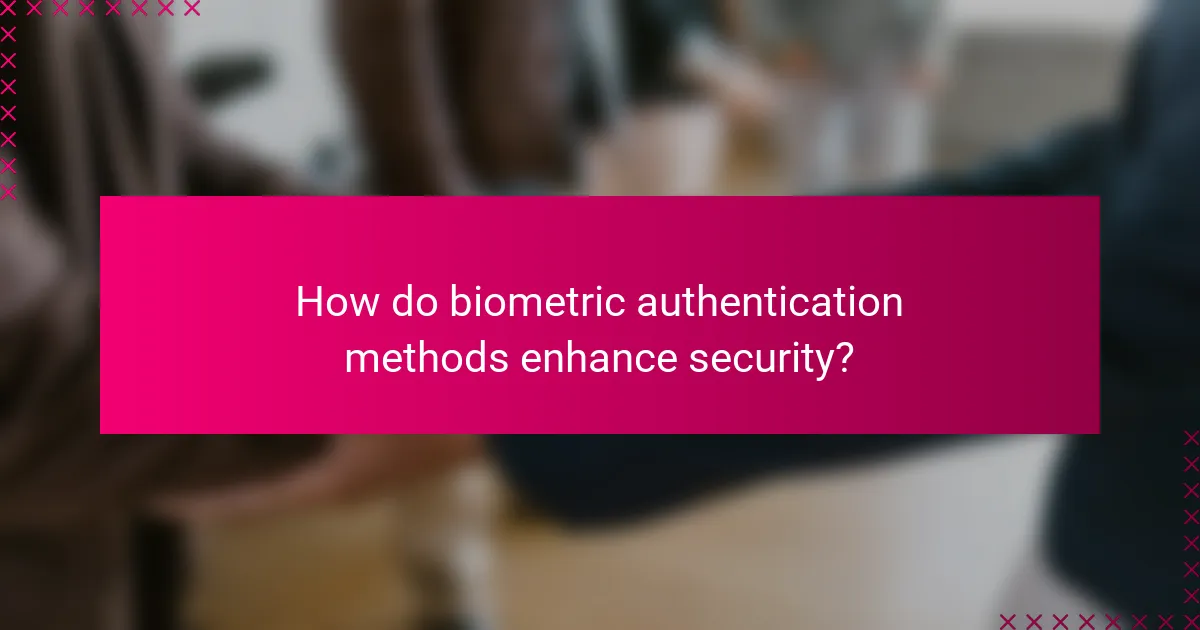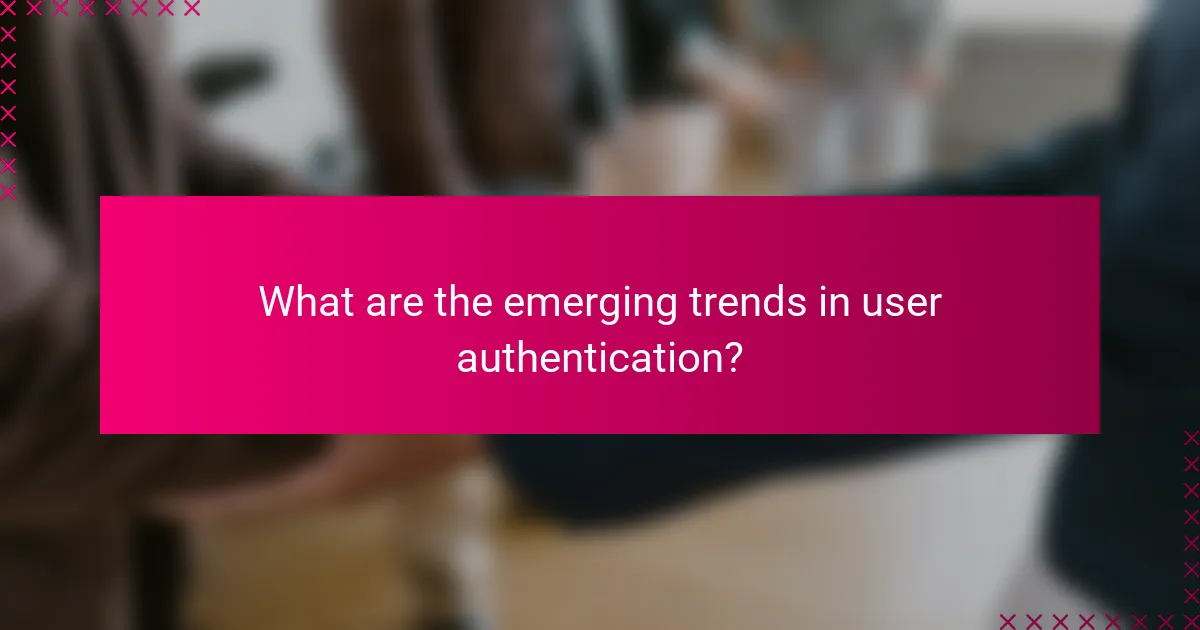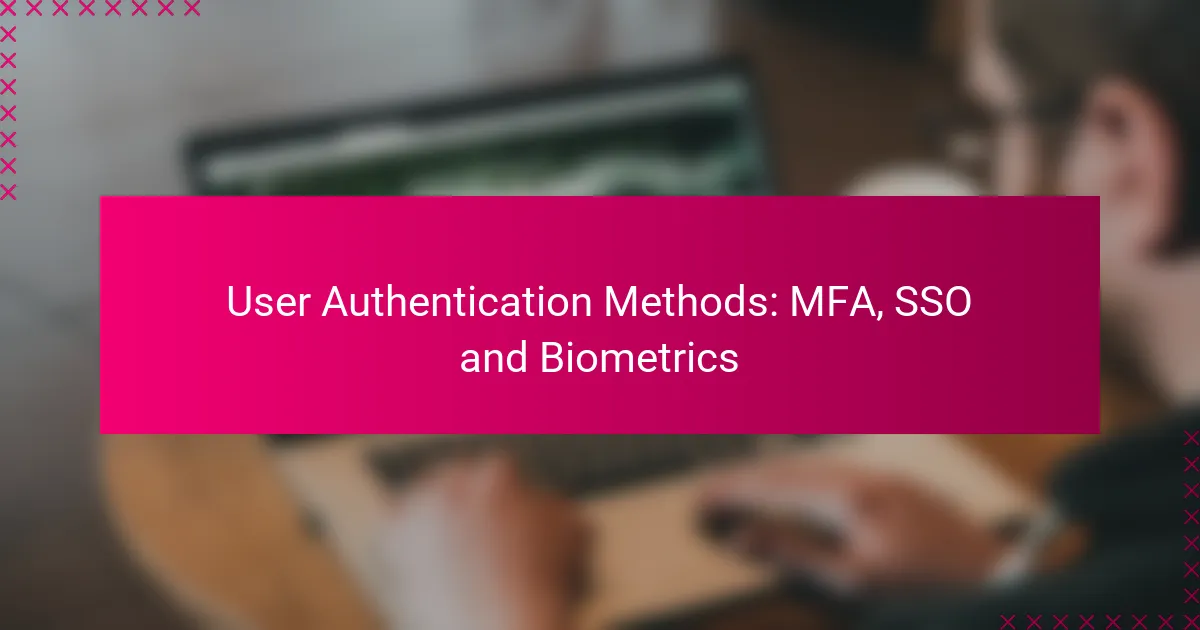User authentication methods such as Multi-Factor Authentication (MFA), Single Sign-On (SSO), and Biometric Authentication are essential for securing access to online services. MFA increases security by requiring multiple forms of verification, while SSO streamlines the login process by allowing users to access various applications with a single set of credentials. Biometric authentication adds an additional layer of security by utilizing unique physical characteristics for user verification.

What are the best user authentication methods for SaaS in the UK?
The best user authentication methods for SaaS in the UK include Multi-Factor Authentication (MFA), Single Sign-On (SSO), and Biometric Authentication. Each method offers unique advantages in enhancing security and user experience, making them suitable for various applications.
Multi-Factor Authentication (MFA)
Multi-Factor Authentication (MFA) requires users to provide two or more verification factors to gain access to an account. This method significantly increases security by combining something the user knows (like a password) with something they have (like a mobile device) or something they are (like a fingerprint).
Implementing MFA can reduce the risk of unauthorized access, especially in environments handling sensitive data. Common MFA methods include SMS codes, authenticator apps, and hardware tokens. Businesses should consider user convenience and potential costs when selecting MFA solutions.
Single Sign-On (SSO)
Single Sign-On (SSO) allows users to access multiple applications with one set of login credentials, improving user convenience and reducing password fatigue. This method enhances security by minimizing the number of passwords users must remember and manage.
While SSO simplifies the login process, it can create a single point of failure; if an attacker gains access to the SSO account, they can access all linked applications. Organizations should implement strong security measures, such as MFA, alongside SSO to mitigate this risk.
Biometric Authentication
Biometric Authentication uses unique physical characteristics, such as fingerprints, facial recognition, or iris scans, to verify a user’s identity. This method offers a high level of security because biometric traits are difficult to replicate or steal.
While biometric authentication can enhance security and streamline the user experience, it raises privacy concerns and requires robust data protection measures. Organizations in the UK must comply with data protection regulations, such as the GDPR, when implementing biometric systems.

How does Multi-Factor Authentication (MFA) work?
Multi-Factor Authentication (MFA) enhances security by requiring users to provide two or more verification factors to gain access to an account. This method significantly reduces the risk of unauthorized access, as it combines something the user knows (like a password) with something they have (like a smartphone) or something they are (like a fingerprint).
Two-step verification process
The two-step verification process typically involves a user entering their password followed by a second factor, such as a code sent via SMS or generated by an authentication app. This adds a layer of security, as even if a password is compromised, the second factor is still required for access.
Users should ensure that their second factor is secure and not easily accessible by others. For example, using an authenticator app is generally safer than SMS codes, which can be intercepted.
Common MFA methods
Common MFA methods include SMS or email codes, authenticator apps, hardware tokens, and biometric verification such as fingerprints or facial recognition. Each method has its strengths and weaknesses; for instance, SMS codes are convenient but can be vulnerable to interception.
When implementing MFA, consider the user experience and the level of security required. For high-security environments, biometric methods or hardware tokens may be preferable, while for less critical applications, SMS codes or authenticator apps might suffice.

What are the advantages of Single Sign-On (SSO)?
Single Sign-On (SSO) simplifies user authentication by allowing individuals to access multiple applications with one set of credentials. This approach enhances security and user convenience, making it easier to manage access across various platforms.
Improved user experience
SSO significantly enhances the user experience by reducing the number of login prompts. Users only need to remember one password, which streamlines access to multiple services, thereby minimizing frustration and time spent logging in.
For example, an employee can access their email, project management tools, and internal databases without repeatedly entering credentials. This seamless interaction fosters productivity and encourages the use of various applications.
Reduced password fatigue
With SSO, users face less password fatigue, as they only need to manage one password instead of multiple ones for different applications. This reduction in the number of passwords decreases the likelihood of forgotten passwords and the need for frequent resets.
Furthermore, fewer passwords mean users are less likely to resort to insecure practices, such as writing down passwords or using easily guessable ones. Organizations can benefit from improved security posture as a result.

How do biometric authentication methods enhance security?
Biometric authentication methods enhance security by using unique physical characteristics to verify identity, making it difficult for unauthorized users to gain access. These methods, such as fingerprint and facial recognition, provide a higher level of security compared to traditional passwords or PINs, as they are inherently tied to the individual.
Fingerprint recognition
Fingerprint recognition works by scanning and analyzing the unique patterns of ridges and valleys on an individual’s fingertips. This method is widely used in smartphones and security systems due to its speed and accuracy, often taking just a few seconds to authenticate a user.
When implementing fingerprint recognition, consider the quality of the sensor and the algorithm used for matching. High-quality sensors can reduce false rejections and improve user experience. However, environmental factors like dirt or moisture can affect performance, so regular maintenance is advisable.
Facial recognition technology
Facial recognition technology identifies individuals by analyzing facial features and comparing them to a database of known faces. This method is increasingly popular in security systems and mobile devices, providing a quick and convenient way to authenticate users without physical contact.
For effective facial recognition, ensure that the system can operate in various lighting conditions and is capable of recognizing faces from different angles. Privacy concerns are significant, so compliance with regulations like GDPR in Europe is essential when deploying this technology.

What factors should be considered when choosing an authentication method?
When selecting an authentication method, consider user demographics, integration capabilities, security requirements, and user experience. Each factor plays a crucial role in ensuring that the chosen method is effective and suitable for the target audience.
User demographics
User demographics significantly influence the choice of authentication methods. For instance, younger users may prefer biometric options like facial recognition or fingerprint scanning, while older users might favor traditional methods such as passwords or security questions.
Understanding the technical proficiency and preferences of your user base can help tailor the authentication experience. For example, organizations targeting a tech-savvy audience might implement multi-factor authentication (MFA) with mobile apps, while those with less tech-savvy users may opt for simpler solutions.
Integration capabilities
Integration capabilities are essential when choosing an authentication method, as they determine how well the solution fits within existing systems. Ensure that the chosen method can seamlessly integrate with current applications, databases, and identity management systems.
Additionally, consider the compatibility with third-party services and platforms. For instance, single sign-on (SSO) solutions can simplify user access across multiple applications, but they require robust integration with each service. Evaluate the potential for future growth and scalability to avoid costly re-implementations down the line.

What are the emerging trends in user authentication?
Emerging trends in user authentication focus on enhancing security and user experience through innovative methods. Key developments include decentralized identity solutions and adaptive authentication techniques, which aim to provide more secure and flexible access control.
Decentralized identity solutions
Decentralized identity solutions allow users to control their own identity data without relying on a central authority. This approach leverages blockchain technology to create secure, verifiable identities that can be used across various platforms.
For example, users can store their identity credentials on a digital wallet, granting access to services without sharing sensitive information. This reduces the risk of data breaches and enhances privacy, as users can selectively disclose information as needed.
Adaptive authentication techniques
Adaptive authentication techniques adjust security measures based on the context of the access request. Factors such as user behavior, location, and device type are analyzed to determine the level of authentication required.
For instance, if a user logs in from a familiar device and location, a simple password may suffice. However, if the login attempt comes from an unfamiliar location, additional verification methods like SMS codes or biometric scans may be triggered. This layered approach balances security and user convenience.
